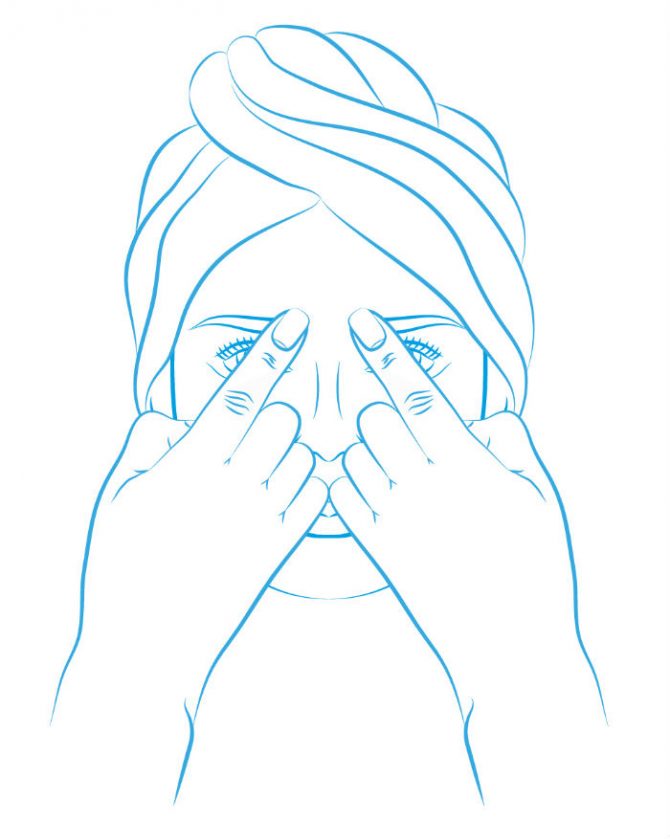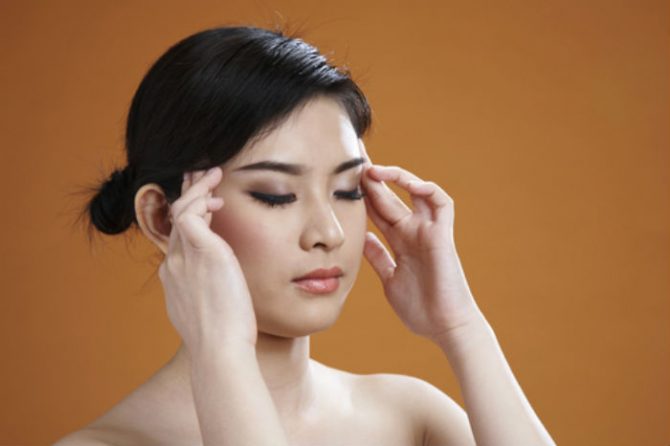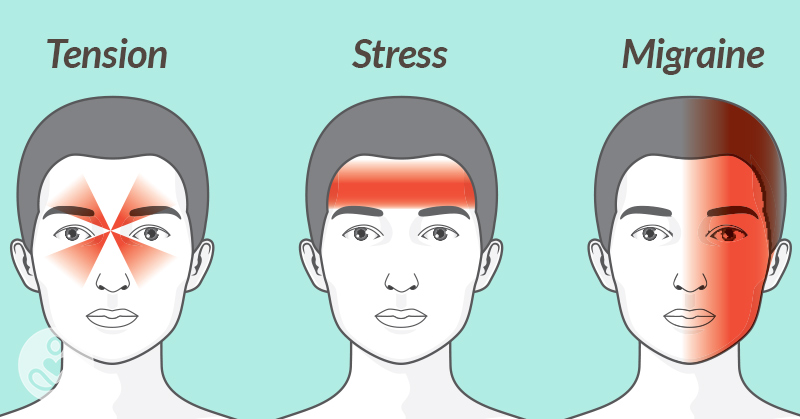Headaches always seem to strike when it’s least convenient. The morning of an important presentation at work, in the middle of your family vacation, or just when you are about to head out to celebrate running your first half marathon. No matter what, they ruin your plans. Headaches can make it difficult to concentrate on a task, put you in a bad mood, and can even make it difficult to see or stand.
There are a variety of reasons we get headaches and with those a variety of ways to get rid of them. We know the dangers of using NSAIDs and painkillers on a regular basis, but when a headache strikes at an inconvenient time it can be tempting to just pop a pill and be done with it.
Instead of turning to drugs to rid you of your pain, consider what the root cause of your headache is, steps you can take to prevent them, and how you can relieve pain and pressure naturally, quickly and on-the-go. The next time you experience those familiar warning signs of an approaching headache, try using these prevention tips and acupressure techniques to nip that headache in the bud!
Common Causes of Headaches
Primary Headaches
Primary headaches are most often caused by overactivity or problems with the pain-sensitive structure in your head, and aren’t typically signs of underlying disease. They’re just common, annoying headaches! The chemical activity in your brain, nerves, and blood vessels surrounding your skull all play a role in headache development. Often there’s a genetic component for those who suffer chronically. (1)
The most common types of primary headaches include: (1)
- Cluster headaches
- Migraine headaches
- Tension headaches
- Trigeminal autonomic cephalalgia (TAC) headaches (ex. cluster + paroxysmal hemicrania)
Secondary Headaches
Secondary headaches are usually symptoms of disease or some external source that causes a headache. Examples of these include: (1)
- External compression headache, caused by pressure-causing head gear (even too-tight hats)
- Brain freeze
- Rebound headaches, caused by the overuse of pain meds
- Sinus headaches, caused by inflammation and congestion in the sinuses
- Spinal Headaches, caused by low pressure or volume of cerebrospinal fluid
- Thunderclap headaches, a group of sudden, severe headaches with multiple causes
Common causes of Headaches
Though there can be thousands of reasons you develop a headache, here are a few of the most common reasons. (1, 2)
- stress
- drinking alcohol (especially red wine)
- sensory overload (bright lights, loud music, even smells)
- dehydration
- too much or not enough sleep
- extremely intense exercise
- hormonal changes
- skipping a meal or not eating frequently enough
- smoking
- eye strain and screen time
- skipping or lowering caffeine intake
- food additives: nitrates (processed meats), MSG (Chinese food), tyramine (some cheeses and soy products), and aspartame
How to Prevent a Headache
There are plenty of measures you can take to prevent a headache before it even develops. The first step is understanding your triggers and what typically causes your headaches. This is easy enough to track in a journal, where you write down when and what you eat and drink, medications you take, how you slept, when you went to bed and woke up, your physical activity, even what the weather was like that day! You will notice trends pretty quickly, and those trends will help you know what you need to do to prevent future headaches.
Simple steps that will prevent most headaches are:
- Staying hydrated and drinking mostly water
- Avoiding sugary foods and drinks as well as monitoring caffeine intake
- Eating a healthy diet of whole foods, with plenty of vegetables and little to no process foods
- Maintaining good posture and not sitting all day
- Use a good quality pillow
- Manage your stress levels
- Wear hats and sunglasses, use ear plugs if necessary
- Get appropriate amounts of sleep (not too much, not too little)
- Stay consistent: Keep a regular eating, sleeping, and exercise routine
6 Acupressure Points for Headaches
Sometimes, no matter how many precautions we take, we still wind up with a headache. Before you reach for the bottle of aspirin, consider relieving tension and pain with the time-honoured practice of acupressure.
Gently press or massage in a circular motion on these six points and watch your headache melt away.
1. Yin Tang
This point is located between your eyes, where the bridge of your nose connects with your forehead. This point is particularly effective for eye-related headaches, whether from eye strain or simply a “behind the eyes” headache.
2. Zan Zhu

Found at the base of the inner edge of your eyebrows, Zan Zhu can also help to relieve a runny nose and is especially useful for those with sinus-related headaches.
3. Ying Xiang
These points are on both sides of the nostrils, in line with your eyes. Messaging here can be useful in opening your sinuses, relieving toothache and stress.
4. Tian Zhu
These are two points found on the back of the head near the center, between the ear and the beginning of the spine. This acupressure point can help to relieve nasal congestion, ear and eye pain, as well as headaches and migraines.
5. Shuai Gu

Found two to three centimeters from your hairline, in the area of your temple just above your ears, this acupressure point can relieve temporal ache and eye pain.
6. He Gu
The most surprising of the headache relief acupressure points is He Gu, because it is found on the back of your hand between your thumb and your forefinger. It is also effective for relieving back pain, toothache, and neck muscle tension.
Acupressure is a fantastic alternative to over-the-counter medications for headache relief. It works in seconds, addresses the underlying tension that is causing your headache and can be done anytime, anywhere. Give it a try the next time you feel a headache coming on, you’ll be surprised at how well it works!
Of course, if you find yourself with constant, painful, and persistent headaches, go visit your doctor to ensure there isn’t an underlying issue causing the problem. Also working with a licensed acupuncturist to manage symptoms and provide regular treatments can be hugely beneficial.

